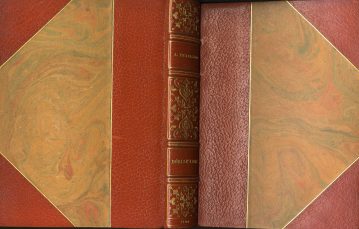Déri Sé’adet ou Stamboul Porte du Bonheur. Scènes de la Vie Turque.
Thalasso, Adolphe & Fausto Znaro.
Synopsis
Fausto Zonaro (1854 – 1929) was an Italian painter, best known for his Realist style paintings of life and history of the Ottoman Empire. He actively displayed works in exhibitions and gained respect of critics. He painted mainly genre works in oil and water colour. The turning point in Zonaro’s career occurred however in 1891, when he fell in love with Elisabetta Pante, a pupil of his in Venice, and together they travelled to Istanbul, capital of the Ottoman Empire. They were partly inspired by Edmondo de Amicis’ orientalist travel book Constantinopoli.
In Istanbul, over time he gained patronage in aristocratic circles. Munir Pasha, the Minister of Protocol, who invited him to visit Yıldız Palace and meet the prestigious local artist Osman Hamdi Bey. He was employed in teaching painting to the Pasha’s wife, and in this way Zonaro and Pante got to know the important artistic figures of Istanbul of that time. In 1896 he was nominated as the court painter (Ottoman Turkish: Ressam-ı Hazret-i Şehriyari) thanks to the intervention of the Russian ambassador who had presented the ruling sultan Abdulhamid II with Zonaro’s work Il reggimento imperiale di Ertugrul sul ponte di Galata (in English: The Imperial Regiment of the Ertugrul on the Galata Bridge), which Abdulhamid II had then purchased.
The Sultan later commissioned from Zonaro a series of paintings depicting events in the life of the 15th-century Ottoman sultan, Mehmed II. Holding the position of court painter, Zonaro viewed himself as the successor to the Venetian painter Gentile Bellini, who had been commissioned by Mehmed II to paint his portrait over 300 years earlier.
Zonaro remained in Istanbul until 1909, when he returned to Italy following the Young Turk Revolution that overthrew his patron Abdulhamid II and the shift to constitutional monarchy. There would be no Ottoman court painter after him. He settled in Sanremo where he continued to paint small works depicting the Italian Riviera and the nearby French Riviera, alternating with nostalgic scenes of the Bosphorus to assuage his yearning for Istanbul, until his death.
Bibliographic reference: Atabey 1214; Not in Blackmer.






